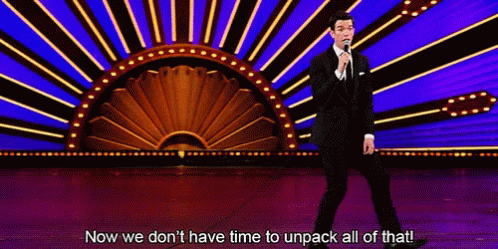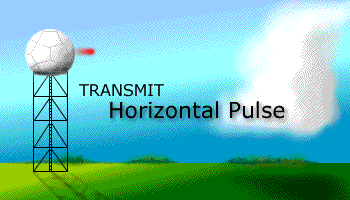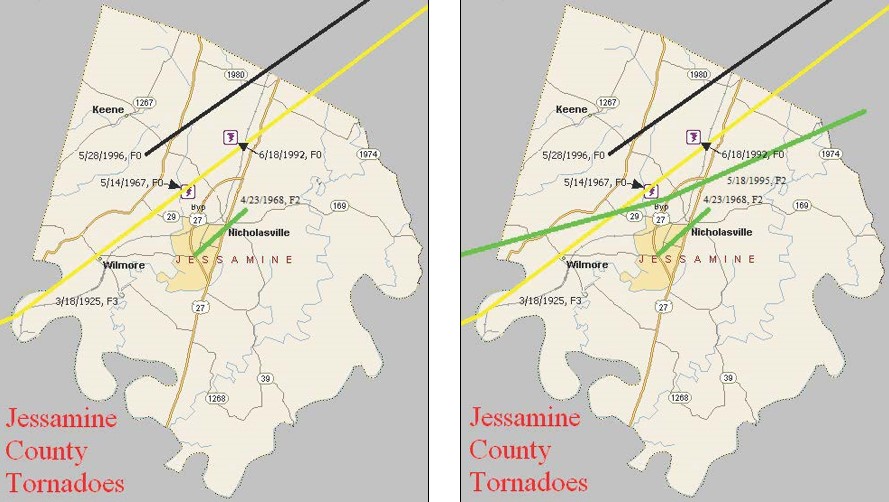Climate Change is happening. Humans are not helping. Our activities are making it worse. There is no reasonable way to deny that when faced with the overwhelming evidence.
I always laugh and say ‘no one has ever won an argument against Physics.’ It is true here, too.
SOME BACKGROUND
Physics shows that “incoming solar energy is converted to longwave radiation, and carbon dioxide absorbs infrared radiation, so more carbon dioxide means more heat.”
Chemistry suggests that “nitrous oxide and rain droplets make acid rain, so adding more nitrous oxide to the atmosphere from agriculture leads to more acid rain.”
Biology says that “Cow burps/flatulence contribute to global methane totals, and methane traps more heat than carbon dioxide, thus leads to even more warming.”
These very basic principles are the foundation of the findings and forecasts suggesting the global climate is warming. It is fact-based analysis rooted in sound, fundamental science. And anyone who says, “the climate has always changed, so big deal” is ignoring the actual problem that we are speeding up that change. Tremendously.
And if you think, “they cant get the weather right tomorrow, how can they predict the climate in 50 years?” I have good news! Predicting warmer versus cooler is much easier than predicting “It will be 77.3F at Gerald’s house next tuesday at 1:43pm when he happens to look at the thermometer on his deck”
And a few years back a handful of scientists went back to check and see how the models have done. Apparently, the models have done well.
We find that climate models published over the past five decades were generally quite accurate in predicting global warming in the years after publication, particularly when accounting for differences between modeled and actual changes in atmospheric CO2 and other climate drivers. This research should help resolve public confusion around the performance of past climate modeling efforts and increases our confidence that models are accurately projecting global warming.
What to do about it? That’s not what this post is about. That is for another day.
MY BEEF
This post is more about when that fundamental foundation is used to build a House of Cards, so to speak, trying to use one thing to tie to another, to tie to another, to tie to another, to make an ascertain about a thing that may be true but isn’t really proveable.
And in this video above (link: https://www.facebook.com/FOX8NOLA/videos/639205837120132/ ), the reporter – and meteorologist – took a the foundation of climate science and built, via proxies, a pretty wild hypotheses and then presented it as a theory.

Could it be true? Sure. Is it likely to be true? Debatable. Is it actually true? No.
And there is a very large difference between a hypothesis and a theory. A hypothesis is an idea based on observation. A theory is a well-agreed-upon prediction backed by experimental evidence that has been replicated by multiple different people across disciplines over time.
The Theory of Optics, Quantum Theory, Evolutionary Theory, and the Fox 8’s Hypothesis.
It is a reasonable hypothesis, but there are a lot of factors against it as a theory….
RADAR IS BETTER
Back in about 2010, the National Weather Service started upgrading their WSR-88D radars to use “Dual Polarization” to get a better look into the skies. It took a few years, but by the time they were done, the NWS had a much better way to monitor active weather across the country.

By 2014, nearly every radar in the United States was Dual-Pol. This allowed the radar meteorologists to pick out more than just “rain vs. dry” and could instead see rain, hail, snow, sleet, and even debris.
This allowed meteorologists with the National Weather Service to see if a tornado was on the ground without needing a human on the ground next to it to confirm it was doing damage. And this allowed the National Weather Service to find many more tornadoes than previously. And the ability for the NWS to see tornadoes improves every year as meteorologists become better at interpreting the data.

That looks like an alarming trend. But the reason I’m less likely to try to extrapolate that into the future very far is that the long-track look at tornado numbers since Doppler Radar came along shows a muhc flatter curve.

And it is less likely that tornado numbers are all of the sudden incrementally increasing, and more likely that the users of the tools are simply becoming more adept at using said tools.
MORE PEOPLE TO SEE ‘EM
In 1980 there were 886 tornadoes in the United States. In 2020, there were 1,052. An increase of 18-percent.
You might say, oh man! That’s a big increase!
In 1980, the population of the United States was about 226 million people. That’s a lot of people. In 2020, that population ballooned to 331 million people. That is a 30-percent increase!
There are a few things to pull from this. On the one hand, there are more people to be impacted by each tornado. A tornado in 1980 that may have been in an open field and unseen could today be in the middle of a new neighborhood.
This would be an easily testable hypothesis, too. Simply look at satellite data from 1980 and overlay 2020 tornado tracks.
A quick example: In Mississippi during the Easter 2020 outbreak, a tornado went through mostly agricultural land, but happened to move through the local airport. That airport was built in 1993. It was rated EF-1 and didn’t have many damage indicators other than the building around the airport. In 1980, this may have been “wind” but because there was more stuff to hit, it was a tallied as a tornado.

On top of the more people to get hit by a tornado, there are also more people to simply see a tornado. Simply put, there are more eyeballs that could actually see a tornado on the horizon.
So even if the number of tornadoes stays constant, there are more people around to see those same tornadoes. And, in this case, perhaps others that weren’t seen previously.
OLDER ‘WIND’ EVENTS BEING RECLASSIFIED AS TORNADOES
I don’t have many examples of this, but one is enough for this post. It involves Meteorological Forensics. A meteorologist at the National Weather Service in Louisville, Kentucky went back and looked at past storm data, damage reports, and pictures to recreate the event.
You can find the full report here: https://www.weather.gov/news/180917_meteorological-forensics
And it wasn’t a small event, either. This was an “F2 tornado with 145 mph winds ripped through Nicholasville that morning along a 24 mile path.”
Originally classified as a straight-line wind event, the science of meteorology and post-storm assessment has improved so much that the meteorologists were able to piece things together and find that a tornado with 145mph wind formed and plowed a long path through the area.

And there may be other events, too, that we simply didn’t understand how to reconstruct accurately at the time, that now could be revisited and tallied as a tornado.
The more times that happens, and the closer numbers get in the year 19xx to the 2016-2021 average, the less of a positive trend line there is.
THE ACTUAL RESEARCH
Yes. People who research things for a living have actually looked at this and run models to see if tornado frequency or intensity would increase if the climate was warmer.
The findings were rather underwhelming for those claiming that a warmer climate means more tornadoes.
In the 2016 research paper titled, “The Realization of Extreme Tornadic Storm Events under Future Anthropogenic Climate Change” from Robert J. Trapp and Kimberly A. Hoogewind, the results showed that, “In contrast to the robust development of supercellular convection in each [control group], the combined effects of increased convective inhibition (CIN) and decreased parcel lifting under [the estimated global warmed group] led to a failure of convection initiation in many of the experiments.”
In 2019, a paper titled, “A review and analysis of possible changes to the climatology of tornadoes in the United States” by Todd W Moore and Tiffany A DeBoer found, “Tornado activity is increasing throughout the Southeast and in the southern portion of the Midwest and is decreasing throughout the southern and northwestern portions of the Great Plains and in the northern Midwest.”
A 2021 research paper titled, “Anthropogenic Influences on Tornadic Storms” by Emily Bercos-Hickey, Christina M. Patricola, and William A. Gallus Jr, had slightly different results. Their research found, “from the pre-industrial to present, the potential for tornadic storms decreased in the winter event and increased in the nocturnal and spring events. With future climate change, the potential for tornadic storms increased in the winter and nocturnal events in association with increased CAPE, and decreased in the spring event despite greater CAPE”
There are a handful of other papers out there saying similar things, some models show one thing, others show a different outcome. It isn’t even an 80-20 split. It is closer to 55-45 in favor of climate change increasing tornado frequency. I read through seven papers. Three showed increases, one showed decreases, one showed no change, and two said it just changed timing, no word on frequency or intensity.
SO WHAT, NICK?
There is no conclusion. That’s the conclusion!
Science isn’t a vote, it is repeated results.
So, the connection is still being researched, reviewed, understood, and analyzed. Could it be connected? Sure! But how much is it connected? Way unsure.
And anyone presenting this information as a “could” or “seems to” without explaining how it might not is misleading people. There is no doubt that the climate is changing and that adding all of the extra heat and energy to the atmosphere is doing something to thunderstorms. But what? How much? And how does it change tornadoes? No one can say for certain at this time.
Furthermore, reports like the one above erode away at the public trust in actual scientists doing the actual science because they report uncertain conclusions as facts.
Telling someone that “shifting weather patterns make seeing a funnel cloud more likely” is a very conclusive sentence. And concluding a report with “people now seem more likely to see bigger, longer-lasting tornadoes” is just flat false.
According to who? Researchers? Because they haven’t figured it out either. It is still being researched! And cherry-picking one article that says one thing versus another on a topic that is still a newly researched topic is irresponsible. And lazy.
Literal fake news.
And don’t get me started on “tornado alley is shifting” because I can talk all day about “Dixie Alley” producing plenty of tornadoes over the years.
The truth? Science takes time. So, we don’t know yet.
I say this often. Science. Takes. Time. And this is a connection that is going to take a lot of time and research to shake out. And this Climate Change – Tornado connection certainly isn’t something any real scientist should be putting together. Yet.


Hi Nick, great article! Your blog is so informative and I always enjoy reading it. Thanks!